We have all seen co-workers with unruly offices where books and papers seemingly sprout from the walls. But no matter how high the piles grow the work keeps getting done and the occupants buried under the stacks thrive.
Not so with our gardens.Our backyard jungles can look great and appear flourishing but all is not well in the unkempt beds. Aggressively growing plants compete voraciously for space and steal nutrients from suffering neighbors. This becomes especially problematic when you are trying to cultivate vegetable gardens or berry patches and experiencing under-performing yields.
Let’s take a look at some of these garden killers with a smiling face, pretty plants that should be introduced into your yard environment at your peril…
1. English Ivy

This plant enjoys a sterling reputation, especially around highfalutin college campuses in he northeast United States and in the hearts of Chicago Cubs baseball fans defending the brick outfield walls of their beloved Wrigley Field. English ivy can be an appealing choice for homeowners seeking ground cover in shady areas.
At first these vines with their eye-catching variegated leaf patterns will seem like a benign addition to your landscape. Not much early growth and demanding no care at all. But after two years of being a good garden citizen – watch out. These nimble climbers will take hold of anything and everything they can get their greedy little roots on as they race to lengths of over 10 meters (33 feet). Keep your pruning shears sharp and your knee pads primed to control these invaders.
2. Morning Glory

Even the name evokes joy. Poems and songs have been written about this beguiling plant. And with its heart-shaped leaves and large funnel-like flowers in shades of blue and purple and yellow and red it is easy to see why. But gardener beware. Once these beauties become established they take no prisoners. This rapid-response vine is even treated as a noxious weed in some locales.
You may think that because most morning glories are classified as annuals their potential for harm can be corralled. But even in colder zones these plants have been known to rear their pretty heads each spring and to re-seed themselves during the growing season. Your best protection against a suffocating blanket of morning glories is diligent dead-heading of spent blooms and by pulling up dead vines to the root after the first frost.
Related: An Awesome 72 Square-Feet SHTF Medicinal Garden Plan
3. Trumpet Vine
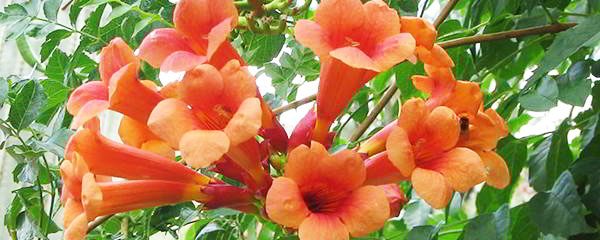
Unlike its flowering vine cousin, the morning glory, the trumpet vine does not not launch stealth attacks on your garden via unexpected reappearances from season to season. This garden warrior makes no secret of its intentions for domination over your yard. The perennial trumpet vine is valued for its profusion of reddish-orange blooms and the hummingbirds that find them irresistible. Even the seedpots of the trumpet vine are cool to look at.
But if Mae West was wrong and too much of a good thing is not wonderful the splendors of the trumpet vine will soon wear out their welcome. Growth in a single season can exceed 10 meters (33 feet). If propagated near the house this intrepid attacker can even wage war on roofing shingles and foundations. The woody vines are tough varmints to get rid of as well. If you just have to have a trumpet vine – and many do – try planting it in a five-gallon bucket with the bottom cut out and sink it in the ground. Or locate it an an open area where the spreading growth can be mowed down.
4. Wisteria
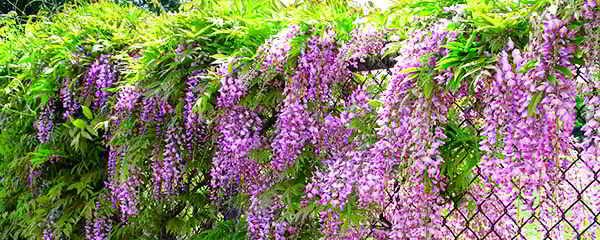 How could anything so lovely and smelling so sweet be dangerous? Well, not only will wisteria plot a relentless march on your garden but this twisting vine is strangling victims in its lavender-laced tentacles as it goes. The good news is that it does not require any fertilising or watering or any care at all, for that matter.
How could anything so lovely and smelling so sweet be dangerous? Well, not only will wisteria plot a relentless march on your garden but this twisting vine is strangling victims in its lavender-laced tentacles as it goes. The good news is that it does not require any fertilising or watering or any care at all, for that matter.
The only way to fight back against willful wisteria is with a rigorous campaign of heavy pruning. And not just constant snipping. You need a virtual masters degree in proper pruning technique to know where and at what time of year to deploy your shears. But even that may not counter the insurgency of the root system. But wisteria is soooo lovely.
5. Lily of the Valley
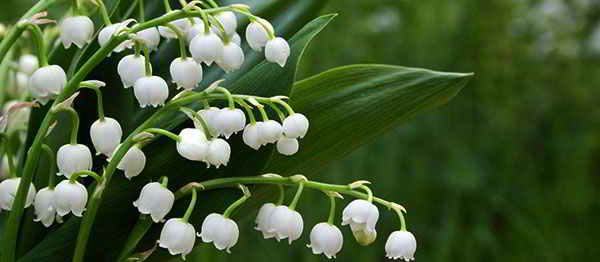 With its fragrant little white bells for flowers, the lily of the valley seems an unlikely candidate to be lumped in with the garish creeping vines above. But its troops are massing underground on rhizomes itching to spread out and claim territory. The secret weapon of this spreading mass is adaptability, performing equally well in light or shade, moist soil or parched.
With its fragrant little white bells for flowers, the lily of the valley seems an unlikely candidate to be lumped in with the garish creeping vines above. But its troops are massing underground on rhizomes itching to spread out and claim territory. The secret weapon of this spreading mass is adaptability, performing equally well in light or shade, moist soil or parched.
Related: 30 Most Popular Herbs for Natural Medicine
6. Gooseneck loosestrife
 Many garden killers are welcomed into the yard under the guise of ground cover. Fill in a bare spot here, take over a spot where nothing else grows over there. The problem is that once the job is performed these plants are often not easily convinced to stay cooped up in their intended territory. Gooseneck loosestrife is one such plant that can go above and beyond the call of duty.
Many garden killers are welcomed into the yard under the guise of ground cover. Fill in a bare spot here, take over a spot where nothing else grows over there. The problem is that once the job is performed these plants are often not easily convinced to stay cooped up in their intended territory. Gooseneck loosestrife is one such plant that can go above and beyond the call of duty.
The low-growing perennial comes in purple, pink, white and yellow blooms that arch gently on the end of a spike. It is a tolerant soul that will respond in any soil conditions save complete dryness. And in ideal conditions gooseneck loosestrife will become extremely aggressive. Even concrete is susceptible to colonization. Before planting this rambunctious little guy it is best to check in with your local experts to see if it will have eyes on overtaking your garden.
7. Mint
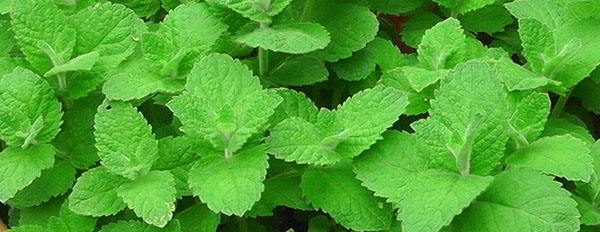 Everyone loves a productive herb garden and no conscientious tender of plants enjoys the role of executioner. With that in mind, think twice about planting mint in your garden. There are many kinds of mint plants that will flavor dishes and do excellent duty as garnishes but all have one thing in common – they are voracious inhabitants of their environment.
Everyone loves a productive herb garden and no conscientious tender of plants enjoys the role of executioner. With that in mind, think twice about planting mint in your garden. There are many kinds of mint plants that will flavor dishes and do excellent duty as garnishes but all have one thing in common – they are voracious inhabitants of their environment.
Mint plants will overwhelm an herb garden without remorse. In response many home gardeners grow mint only in containers. If planted in a garden the only way to make this randy herb play nice with others is to sink them in the soil while still surrounded on the sides by those containers. Even that may not be enough to prevent this aromatic little fighter from bullying more timid garden neighbors. Mint can become so invasive that even the most organic of gardeners are forced to turn to chemicals to enact damage control.
8. Chives
 Chives are another herb that are not content to grow meekly within the confines of a garden. Like many soldiers in the war on your yard chives require very little in the way of field rations – chives may be the easiest of all herbs to grow. They spread out above ground via seeds and below the surface with tiny bulbs. While beginning life in your well-tended garden beds these conspirators are likely looking with longing at the wide open spaces afforded by your nice green lawn.
Chives are another herb that are not content to grow meekly within the confines of a garden. Like many soldiers in the war on your yard chives require very little in the way of field rations – chives may be the easiest of all herbs to grow. They spread out above ground via seeds and below the surface with tiny bulbs. While beginning life in your well-tended garden beds these conspirators are likely looking with longing at the wide open spaces afforded by your nice green lawn.
If chives spread into the lawn the infiltration is not an easy one to defend. Pulling the small plants out of the grass often breaks the stem from the bulb which leads to even more spreading. Chemicals often cannot cling to the plant because of its waxy coating and are ineffective. Digging up the bulbs is the only sure way to eradicate the plant but even the skinniest of trowels is likely to bring up good grass. So enjoy your chives. Those little purple flowers look good – and are edible too – and they sure help spruce up a bland baked potato.
Related: 79 Edible Flowers in North America (with Pictures)
9. False Lamium
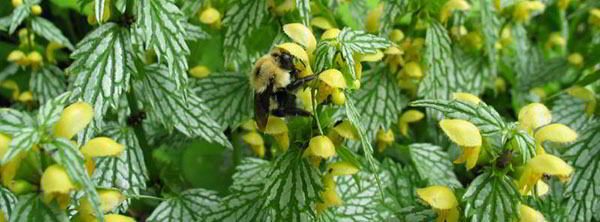 Already this plant sounds like a bad actor. What is it hiding and what did it do with the real lamium? But its foliage is streaked with thick veins of silver and its flowers burst out in bright yellow and so who can resist inviting it into the garden. And it will accommodate even dry shade conditions.
Already this plant sounds like a bad actor. What is it hiding and what did it do with the real lamium? But its foliage is streaked with thick veins of silver and its flowers burst out in bright yellow and so who can resist inviting it into the garden. And it will accommodate even dry shade conditions.
But while you are entranced with those pretty leaves the false lamium is shooting out runners willy nilly that are eager to root and threaten to squeeze the life out of your garden. And those tiny yellow flowers are spitting out even tinier black seeds that will further strengthen the position of this garden denizen. No wonder its alternate name is Herman’s Pride – this character can take over a garden.
10. Yarrow
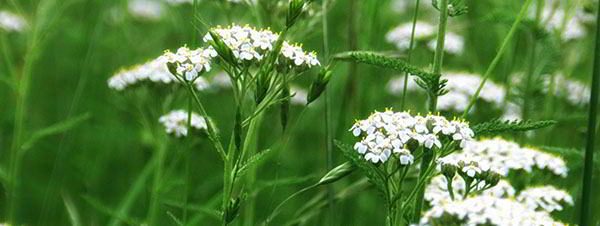 Yarrow could be the poster plant for the debate between good and evil in the garden. There are those who cherish the plant for its ease of care and the resulting cluster of flowers on stalks that last for the entire growing season.
Yarrow could be the poster plant for the debate between good and evil in the garden. There are those who cherish the plant for its ease of care and the resulting cluster of flowers on stalks that last for the entire growing season.
And there are others who feel that calling the plant “yarrow” deprives the demon of its full name – “yarrow weed.” Planting yarrow in a garden is the beginning of a long relationship. The hardy plant thrives in just about any soil and those flower stalks harbor thousands of seeds waiting to be carried off by insects, birds or a modest gust of wind. And when deposited elsewhere in your garden or on your lawn those seeds will remain viable for roughly nine years in the ground.
And if you decide the yarrow is no longer friend but foe, breaking up is very hard to do. Yarrow grows via rhizomes and if even a small piece remains in the digging process it too will become a new plant. In frustration in the battle against yarrow many gardeners turn to chemicals but these must be applied repeatedly during the growing season and even if successful it is likely to be little more than a Pyrrhic victory in the ongoing war in your garden.
You may also like:
This Common Driveway Weed is One of Nature’s Most Powerful Survival Plants
This Bug Will Kill Most of the Americans during the Next Crisis (Video)
Top 8 Deadly Plants in the U.S. That You Need To Avoid
This Free Application Identifies Plants On the Spot
Mosquito-Repelling Weeds That you can Plant this Spring in your Backyard

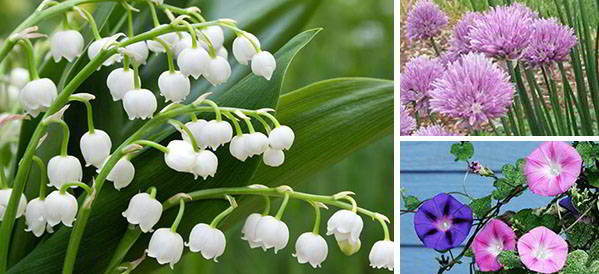




















Two more plants that should probably be in the top 20: horseradish and comfrey, especially the kind that propagates by seed. Both of them are almost impossible to eradicate once you have them, as with yarrow, the smallest piece of root will start a new plant. The saving grace is they are very hard to find in stores so hopefully only people who really want them are getting them.
Yarrow is also a wonderful medicinal plant and it is edible. Got a bite, a sting, a cut, or a scratch? Apply a yarrow leaf.
Yarrow is well known for stopping bleeding. It is an esential plant to have in your arsenal for when the SHTF. Plant it where it won’t matter if it becomes invasive. I plant mine in a large round container bag.
Some of the links don’t work in this article. The article itself is very informative.
Thank you for bringing this to my attention. I’ve fixed them.
Let me add one more joyful beast. Two years ago, I planted Jerusalem Artichokes in a raised bed. At the end of the season, I pulled everyone and dug out the roots …. foolish me. This year, I had a bumper crop and they escaped the concrete block raised bed ….Now I have a problem … I’m thinking napalm!
Make artichoke relish. Rather good.
I have Jerusalem Artichokes too & they completely disappeared from where I originally planted them and appeared in the middle of my garden, I moved them from there to another bed. I enjoy eating them too much to completely remove them. I used a coil of 4″ heavy duty lawn edging and sunk it into the ground then used 4×4’s on top. So far no escapees. They do grown tall! I’ve had them 12 feet high.
Farmer: ‘Chokes are excellent as livestock feed. All animals love the leaves, hogs will root to china for the tubers. Put a pig in there and if you find any next summer, call it an act of God. niio
Wisteria can be Bonsaied. You still have to prune it.
We grew Morning Glory in a pot with a trellis. Enjoy the color and beauty and kept completely under control.
I love your articles. One natural product that kills invasive weeds is . . .WHITE VINEGAR!!! I cut the plant I want to remove to the ground, then I pour a cup of the white vinegar — though any vinegar will do. The vinegar kills the roots. I do not use any chemicals at all.
I really appreciate this your input. I will try this. Never even thought to use it this way. I love vinegar, good for so many things.
Will this work on a trumpet vine? It is my nemesis.
Vinegar is a chemical. It is a dilute form of acetic acid. Besides killing plants it is also good for acidifying your soil.
How would I use it to stop lilly of the valley? I keep- trying to dig them out, but come spring, they are back. Their scent is lovey, but are killing my Trilliums
English Ivy is a monster! The family tht lived here before us, about 55 years ago, planted some in a clay bank to hold the clay in place. It did that But the Ivy also climbed many of the conifer trees, nut and fruit trees here and literally strangled them to death. Of course, the copious poison oak and blackberry jungles have kept us away fromt he trees, but those we DID clear to, and tried to kill the ivy in, were a lost cause while they were still beutiful and green. OF course, the trees were over 40 ft high, in many cases, our ladders were not that tall, so we would cut the ivy at the ground, pull those roots out, remove the roots from around the trees,a nd any we could find, then climbed as high as we could and cut the ivy vvines from off the trunks of th trees, pulling them away. Where we could NOT reach, well-up-into the trees, that severed ivy happily took over the trees, and literally composted the bark for their own food-source, and STILL eventually murdered the trees. Too bad ivy is not edible- the world would avoid hunger forever…
i have this 23 years living here & 0nly wish it would spread more & keep out the noxious! I do have to trim every few years & every year where it extends onto driveway.Perhaps I should feed it but then am feeding those noxious too! Yikes!
Most don’t grow here, but back east, family plants lily of the valley where most things wont grow, along the foundation. there are showier plants, like balsam lady slipper, but lily does one thing year-’round, anything trying to borrow along the foundation dies. In mining country and around farms, rats are dangerous is only because they can carry diseases.
Morning glories are bindweed. Arizona outlawed them because they get into pastures and hay and are toxic.
Ivy, nope, but it’s good sheep feed.
Trumpet vines wreck houses. Arial roots will grow into siding and then walls and pry it apart. niio